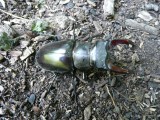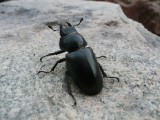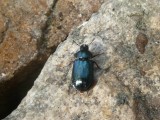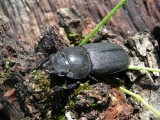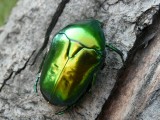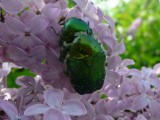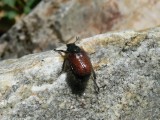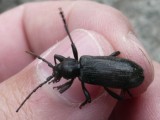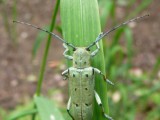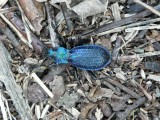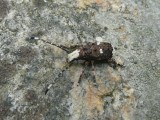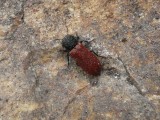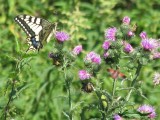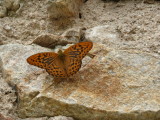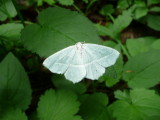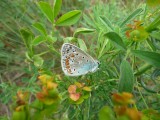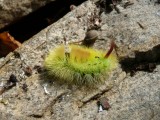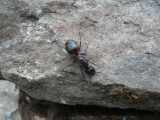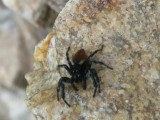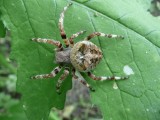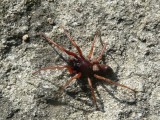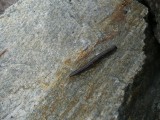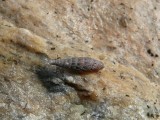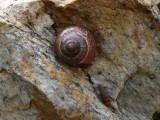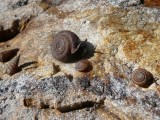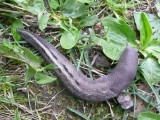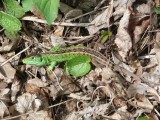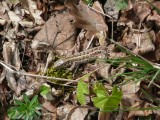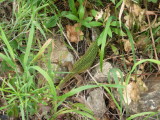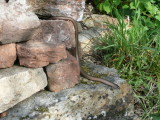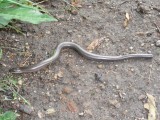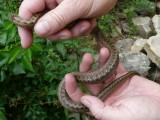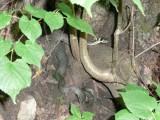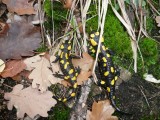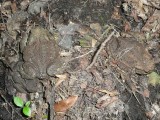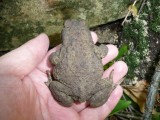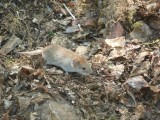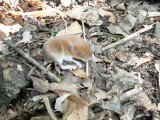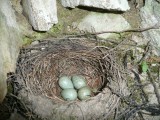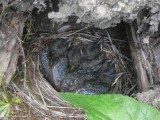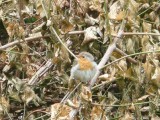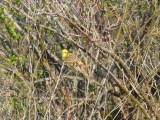Invertebrates
Beetles
Partially primeval forest with old tree and decomposing wood is ideal environment for beetles that need it for their phylogeny. One of our biggest beetles – the Stag Beetle (Lucanus cervus) – belongs among them. There are also other smaller stag beetles here, for example Platycerus caraboides or Lesser Stag Beetle (Dorcus parallelopipedus). Other beetles dependent on the dead wood are many species of longhorned beetles (Cerambycidae). Shrubs in blossom and flowers are also attracted by many beetles. There are several species of flower chafers, for example Rose Chafer (Cetonia aurata), Golden Chafer (Potosia cuprea obscura) and Big Rose Chafer (Cetonischema aeruginosa).
Also ground beetles are plentiful. Blue ground beetle (Carabus intricatus) is wintering in rotting logs. From other groups of beetles there are for example rove beetles, weevils, jewel beetles, burying beetles – as Black Sexton Beetle (Nicrophorus humator), scarabs – for example North-European Scarabaeid Beetle (Phyllopertha horticola), leaf beetles and many others.
In 2012 during a small coleopterological survey 136 species were found in four days from May to July.
Butterflies
Unforested area with flowers is attracted by many species of butterflies. Burnet Moth (Zygaena ephialtes) is in big swarms here. Many brush-footed butterflies and white butterflies can be found here together with others as for example Jersey Tiger (Euplagia quadripunctaria) or one of the biggest and most beautiful butterflies – the Old World Swallowtail (Papilio machaon). Caterpillars of that butterfly feed on parsley family plants.
Ants and wasps
Many species of the family Hymenoptera can be found at flowers here as well. There are different species of bees and bumble-bees including the biggest European bee – Violet Carpenter Bee (Xylocopa violacea). We can also mention rare species of thermophilic ants, for example Camponotus aethiops.
Other invertebrates
Rare species of spiders should be mentioned. Some of them are hidden in stony rubble for example European Cave Spider (Meta menardi)that usually dwells cellars or caves. There is also the spider Dysdera ninnii here. Other invertebrates as millipede (Ommatoiulus sabulosus) or centipedes could be found among stones.
Molluscs
There are some molluscs here too. Lots of Burgundy Snails (Helix pomatia) come up after rains. Other species of snails can be found in stone rubble feeding on organic remains, for example Small Door Snail (Clausilia rugosa), Hairy Snail (Trichia hispida), and Copse Snail (Arianta arbustorum).
Vertebrates
Reptiles
Many reptiles are attracted by hideaways among stones and plenty of food. Sand Lizards (Lacerta agilis) are common at sunny places. While females are brown the males are coloured green. At the same places we can meet the legless lizard Slow-worm (Anguis fragilis) ass well.
Also grass snakes as (Natrix natrix) are common here. They prefer more wet places as shadowy hillsides or ditches near the castle. All the reptiles are rather timid. We can see them exceptionally at less busy places.
Amphibians
Rare Fire Salamander (Salamandra salamandra)is quite common near the castle. It dwells stony fields with many gaps. It is nocturnal creature looking for colder places. You can meet it at dusk or at a dawn during wet or rainy days. The bigger chance of meeting the salamanders is in spring or in autumn when they are leaving shelters or looking for them. They are hidden in hot days. Salamanders are relatively long-lived. They live about 20 years in the nature and to 40 years in captivity.
Several species of frogs, especially true frogs or the Common Toad (Bufo bufo) occur on wet places.
Mammals
The small mammals are the most numerous. The Bank Vole (Clethrionomys glareolus)is the most abundant among them. It has a typical red fur, a pointed nose and a shorter tail. It also has a smaller eyes compared to mice. They build underground nests from dry grass and leaves in stony rubble the most often but in hollow logs or stumps as well. It is omnivore animal, he feeds on plants, fruits and insects too. Its activity is diurnal and nocturnal as well. We can meet it practically everywhere because it’s plentiful and used to people. It is sufficient to sit down and wait a moment quietly to see some.
There are also European field mice (Apodemus), shrews, hedgehogs or weasels here..
Squirrels occur on trees in both forms – red and black. Big amount of hollow trees and hazels and oaks full of food provide good living conditions for them. Hares go to nibble different shrubs and grass near the castle. Spindle is their favourite food. Hares are timid during days and hard to see.
We can catch a side of roebucks and wild boars but they are rather shy during days. Roebucks gloats at grass near the castle. Wild boars nuzzle in undergrowth especially in autumn and in winter under oaks.
Birds
Lots of nesting trees, shrubs and food are necessary many species of birds. Directly on the area of the castle there are several nests of woodpeckers (Dendrocopos) in tree hollows. Black woodpecker (Dryocopus martius), Eurasian Nuthatch (Sitta europaea), European Robin (Erithacus rubecula), Common Blackbird (Turdus merula), Blue Tit (Cyanistes caeruleus), Great Tit (Parus major), Marsh Tit (Parus palustris), Eurasian Jay (Garrulus glandarius), European Goldfinch (Carduelis carduelis)and different species of birds of prey and crows occur and nest here. Hooting of the Eurasian Eagle-Owl (Bubo bubo) is often heard at nights.
